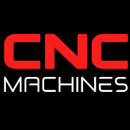An In-Depth Guide to SLS 3D Printing: Materials, Finishes, and Applications

An In-Depth Guide to SLS 3D Printing: Materials, Finishes, and Applications
What is SLS 3D Printing?
Selective Laser Sintering (SLS) is a popular additive manufacturing technology that uses a high-powered laser to fuse small particles of polymer powder into a solid structure based on a digital 3D model. Unlike other 3D printing methods that rely on filament or resin, SLS builds parts layer by layer using powder materials, which makes it ideal for creating complex geometries and functional prototypes without the need for support structures.
SLS 3D printing is widely used in industries such as aerospace, automotive, healthcare, and consumer goods due to its ability to produce durable, high-quality parts with intricate details.
SLS 3D Printing Materials
SLS 3D printing offers a wide range of materials, each with unique properties suitable for different applications. Here is a bullet-point list of common SLS materials:
- Nylon 12 (PA 12)
- Most commonly used SLS material.
- High strength, durability, and chemical resistance.
- Suitable for functional prototypes and end-use parts.
- Nylon 11 (PA 11)
- Biocompatible and derived from renewable resources.
- Flexible and impact-resistant.
- Ideal for prosthetics, medical devices, and automotive components.
- Nylon 6 (PA 6)
- Higher strength and stiffness compared to PA 12 and PA 11.
- Used in applications requiring high mechanical performance.
- Glass-Filled Nylon
- Nylon powder mixed with glass beads for increased stiffness.
- Excellent for parts that need to withstand high loads and temperatures.
- Aluminum-Filled Nylon
- Nylon powder mixed with aluminum particles.
- Offers enhanced thermal conductivity and improved mechanical properties.
- Carbon-Filled Nylon
- Nylon powder reinforced with carbon fibers.
- Lightweight and strong, with excellent stiffness-to-weight ratio.
- Common in aerospace and automotive applications.
- Thermoplastic Polyurethane (TPU)
- Flexible, rubber-like material.
- Ideal for producing elastomeric parts such as gaskets, seals, and footwear.
- Polypropylene (PP)
- Chemical resistant and semi-rigid.
- Used for containers, automotive parts, and living hinges.
- Polyether Ether Ketone (PEEK)
- High-performance thermoplastic with excellent mechanical and thermal properties.
- Suitable for aerospace, automotive, and medical implants.
- Polystyrene (PS)
- Rigid and lightweight material.
- Commonly used in prototyping and packaging.
Types of Finishes and Final Products in SLS 3D Printing
SLS 3D printing produces parts with a slightly rough surface finish directly out of the printer. However, various post-processing techniques can be employed to achieve different types of finishes, depending on the application's requirements.
- As-Printed Finish
- Slightly rough texture due to unsintered powder.
- Suitable for functional prototypes where surface finish is not critical.
- Bead Blasting
- Used to smooth out the surface by blasting the part with fine beads.
- Creates a matte finish and improves the appearance.
- Polishing
- Mechanical or chemical polishing can create a smoother surface.
- Ideal for parts that require a high-quality finish or aesthetic appeal.
- Dyeing
- Parts can be dyed to different colors for aesthetic or branding purposes.
- Commonly used in consumer products and prototypes.
- Coating
- Parts can be coated with various materials, such as paints or protective layers.
- Enhances appearance and provides additional protection.
- Infiltration
- Infiltrating parts with resins can increase their strength and improve surface finish.
- Often used in applications where the part needs to withstand higher loads.
Applications for Selective Laser Sintering
SLS 3D printing is incredibly versatile and finds applications across various industries. Here are some of the key applications for Selective Laser Sintering:
- Aerospace
- Lightweight, durable parts such as ducting, brackets, and housings.
- Complex geometries that would be difficult or impossible to achieve with traditional manufacturing.
- Automotive
- Functional prototypes, end-use parts, and custom components.
- Production of lightweight parts that contribute to overall vehicle weight reduction.
- Healthcare
- Custom medical devices, prosthetics, and orthopedic implants.
- Biocompatible materials like Nylon 11 used for patient-specific solutions.
- Consumer Goods
- Production of custom eyewear, footwear, and accessories.
- Small-batch manufacturing and personalization of products.
- Industrial Manufacturing
- Tooling, jigs, and fixtures that require durability and precision.
- Replacement parts for machinery and equipment.
- Architecture and Design
- Scale models and prototypes with intricate details.
- Customized furniture and lighting fixtures.
- Electronics
- Enclosures, housings, and connectors for electronic devices.
- Complex, heat-resistant components for demanding environments.
- Education and Research
- Functional prototypes for testing and experimentation.
- Production of research tools and components for various experiments.
Conclusion
Selective Laser Sintering (SLS) is a powerful and flexible 3D printing technology that has revolutionized the way complex parts are manufactured. From high-performance materials like Nylon 12 and PEEK to versatile finishing options, SLS offers endless possibilities for creating functional prototypes, end-use parts, and custom products across a wide range of industries. Understanding the materials, processes, and applications of SLS 3D printing can help you leverage this technology to its full potential, whether you're developing aerospace components, medical devices, or consumer goods.


